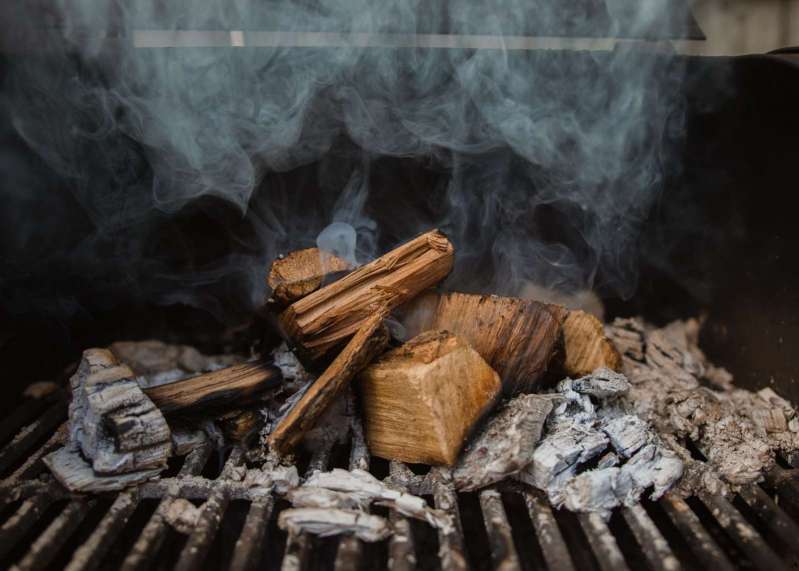
Smoking is an ancient preservation process that has been used since prehistoric times. From the most primitive forms of exposing food to smoke, this technique has been increasingly perfected over the millennia to the present day.
The smoking process
Traditionally, smoking is carried out in special smoking chambers (best known as smoke houses). Depending on local architectural traditions and the owners' budgets, these rooms may resemble small houses or sheds, or large masonry cabinets. The interior walls are typically covered in soot.
As can be guessed, the fireplace is an indispensable element of each of these constructions. The wood that produces the smoke is burned there. The fireplace can be inside or outside the room. In the latter case, a flue discharges the smoke inwards.
Inside the smoking chamber, various types of foodstuffs are processed, usually sausages, meat, cheese and fish, which are hung to expose to the smoke as much surface area as possible.
Nowadays, such facilities are rare, and are mostly used for niche productions. For industrial food production, stainless steel smoking chambers are preferred. Similar in appearance to large metal cabinets containing horizontal rods where hung products, these 'high-tech' chambers follow the same principles as traditional smoking, but allow a large quantity of products to be processed under more manageable environmental conditions.
Why do smoked foods keep longer?
Like most preservation processes, smoking reduces the bacterial load in foods. This is mainly done through the chemical action of smoke, which has antimicrobial properties.
To extend the shelf life of the product, smoking is often accompanied by a heating process which, acting in a similar way to pasteurisation, helps to limit the number and viability of bacteria. If smoking is accompanied by salting, the dehydration of the product and consequently its shelf life is further promoted.
It must be said that smoking, unlike other preservation systems, has two major limitations:
- It is applicable to a very limited range of products.
- It irreparably changes the flavour of foods.
This last point, paradoxically, is the real plus that has allowed this process to survive and thrive even in the 21st century!
Smoking for flavour
When foods are smoked, they take on a special aroma that is much appreciated by gourmets.
The flavour imparted to meat, fish and cheese varies depending on the wood used to produce the smoke. Often, various types of herbs are burned along with the wood. The burning of the different essences adds notes of flavour to the food.
Types of smoking wood
As mentioned earlier, smoking wood is mainly selected for the taste that the smoke gives to the food. Coniferous woods are not used because they are too resinous and impart a bad flavour to the food. Damp, treated or improperly seasoned woods produce fumes that are hazardous to health.
For the rest, one can draw from a variety of tree and shrub species, each characterised by special aromatic notes. In this table, we present an overview of the most popular smoking woods.
|
Wood |
Taste |
Suited for |
|
Maple |
Strong |
Pork, poultry, game, cheese |
|
Orange |
Aromatic |
Beef, pork |
|
Cherry |
Fruity |
Poultry, pork, beef, salmon |
|
Beech |
Neutral |
All smokable foods |
|
Ash |
Light |
Red meat, fish |
|
Hickory (walnut) |
Intense |
Red meat, game |
|
Almond |
Sweet |
Meat |
|
Apple |
Fruity |
Poultry, pork |
|
Alder |
Sweet |
Salmon, seafood, cheese |
|
Pear |
Fruity |
Poultry, Pork |
|
Oak |
Intense |
Meat, cheese |
Types of smoking
In general, each type of smoked meat requires its own smoking recipe. However, the various processes can be classified into two distinct categories:
- In cold smoking, the product is exposed to smoke at room temperature. Smoking can last for days or even weeks.
- Hot smoking, on the other hand, involves heating the product to temperatures above 40°C. As a result, the product is cooked, changing its organoleptic properties. The duration of the process is limited to a few hours.
|
Smoking type |
Hot |
Cold |
|
Temperature |
50-90°C |
20-25°C |
|
Exposure time |
A few hours |
A few days |
|
Relative humidity |
40-50% |
75-85% |
|
Suitable for |
Sausage, Prague ham, herring |
Speck, salmon, salami, cheese |
In between these two categories is the 'half-cold smoking', where the temperature is set in an intermediate range between hot and cold smoking.
In addition to what we can define as traditional smoking, there is also liquid smoking. This consists of treating products with so-called 'liquid smoke', a precipitate of natural smoke that allows the typical smoky flavour to be imparted to food without the need for a smoking chamber.
Smoking: health risks
In general, smoked products are not risky to the health, although it must be remembered that, since most of them are greasy foods, their consumption should be limited.
However, a bad smoking process can produce polycyclic aromatic hydrocarbons (PAH), which are carcinogenic substances.
To produce a safe smoked food, practices must be followed very precisely:
1) The density of the smoke must be kept under control. This is why in modern smoking chambers a filter is placed between the wood fire and the chamber containing the products. This allows only aromatic particles to pass through, limiting contamination.
2) The humidity of the smoke must be monitored, which must be within guard parameters.
3) The duration of exposure to smoke must not extend beyond the recipe time.
4) The temperature must be carefully monitored to prevent it from exceeding the warning levels, thereby promoting the combustion processes that lead to the formation of PAHs. This parameter is particularly complex to manage for two reasons. First of all, the temperature must be monitored not only in the smoking chamber, but also in the product. Moreover, the reference temperature varies during the process.
In short, smoking is not an easy process to monitor if you do not have the right system to do so!
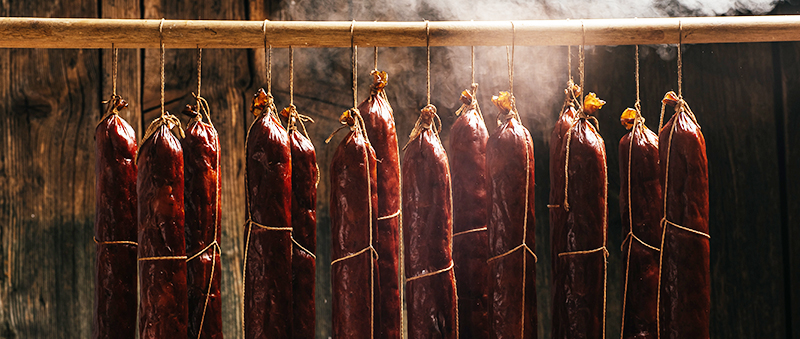
How we monitored temperature in a smoking process
A few years ago, Tecnosoft received a request from a Canadian company specialised in monitoring production processes in the food industry. The customer was planning to market a monitoring system for sausage smoking processes in the American market and was looking for a manufacturer capable of supplying a purpose-built system.
The required features were quite stringent:
- The logger had to measure the internal temperature of the meat during the smoking process.
- The logger had to be able to be easily inserted and removed from the smoking chamber.
- The logger had to survive up to 100°C.
- The required system had to be wireless and integrable with a remote monitoring system accessible via computer.
- The system had to closely monitor the temperature during all phases of the hot smoking process, triggering alarms if values outside the threshold were recorded. For the subsequent cooling phase idem.
The request was very specific and particular, so there was no system immediately suitable for the purpose in our catalogue.
We therefore reasoned which systems were closest to the request. Our choice fell on DeepWave.
This monitoring system in fact already had many of the features required by the customer:
- Its nodes are radio loggers with LoRa protocol, therefore wireless
- It is suitable for remote monitoring
- It can be integrated with various types of sensors for data collection
- It can be programmed with alerts as required
There were two things we didn't know yet:
- Do Deepwave nodes survive up to 100°C?
- Are they manageable enough to be added and removed from a smoking chamber?
The first was the most pressing issue. We immediately did tests to check the resistance of DeepWave nodes at 100°C. We soon realised that this was far too high a temperature for standard loggers.
We therefore built a new Deepwave node prototype, cut to the bone the non-required functionalities, in order to make it as strong as possible.
In terms of handling, we had to completely redesign the system. The square, flat shape did not lend itself to use. We therefore opted for a practical cylinder shape. Finally, we added a hook that allows the logger to be conveniently hung from the horizontal rods of the smoking chamber.
Finally, we equipped the new logger with a thin metal tip, perfect for inserting into the meat as discreetly as possible. Connecting the logger to the tip is an extendable cable.
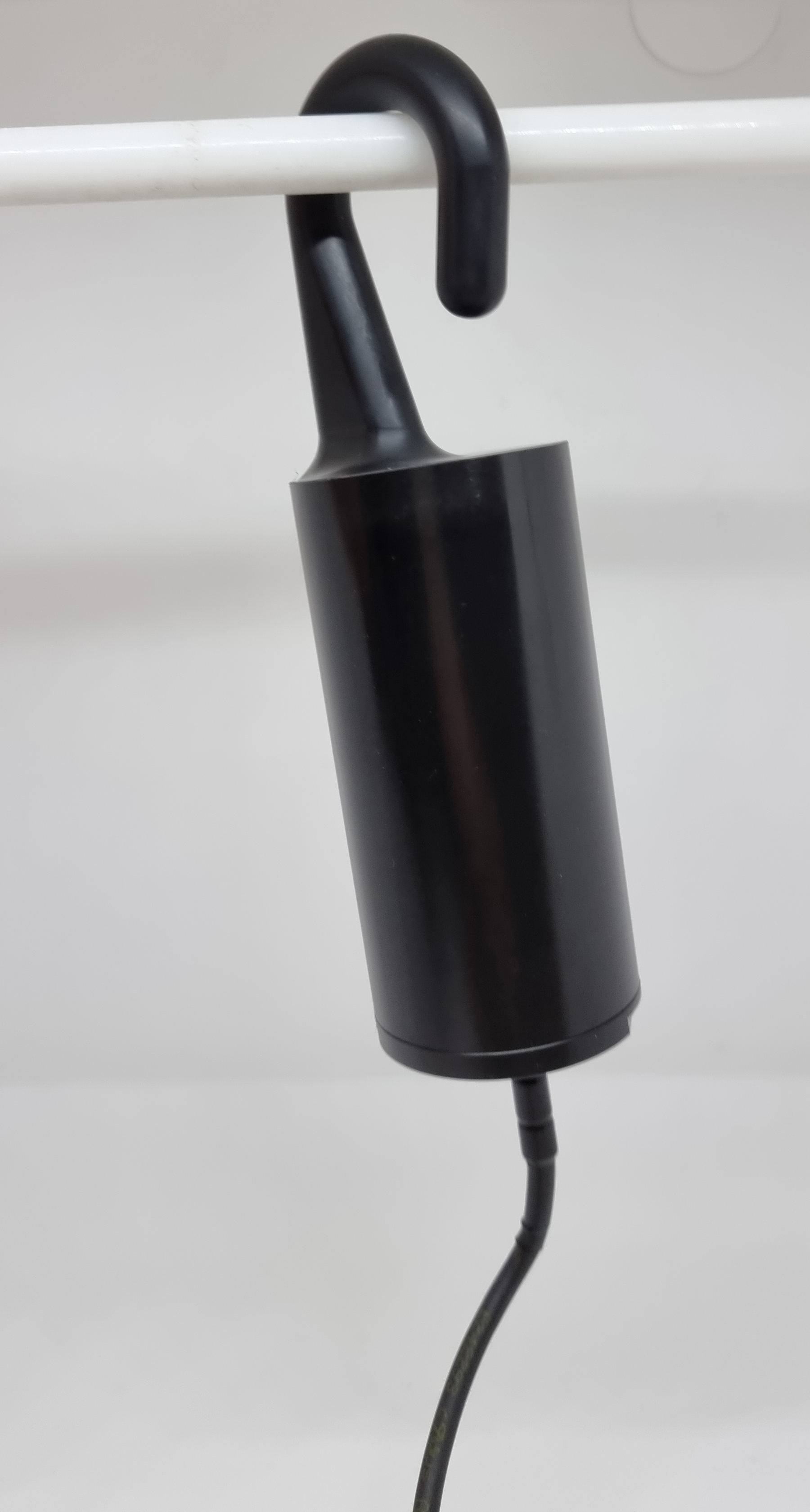 |
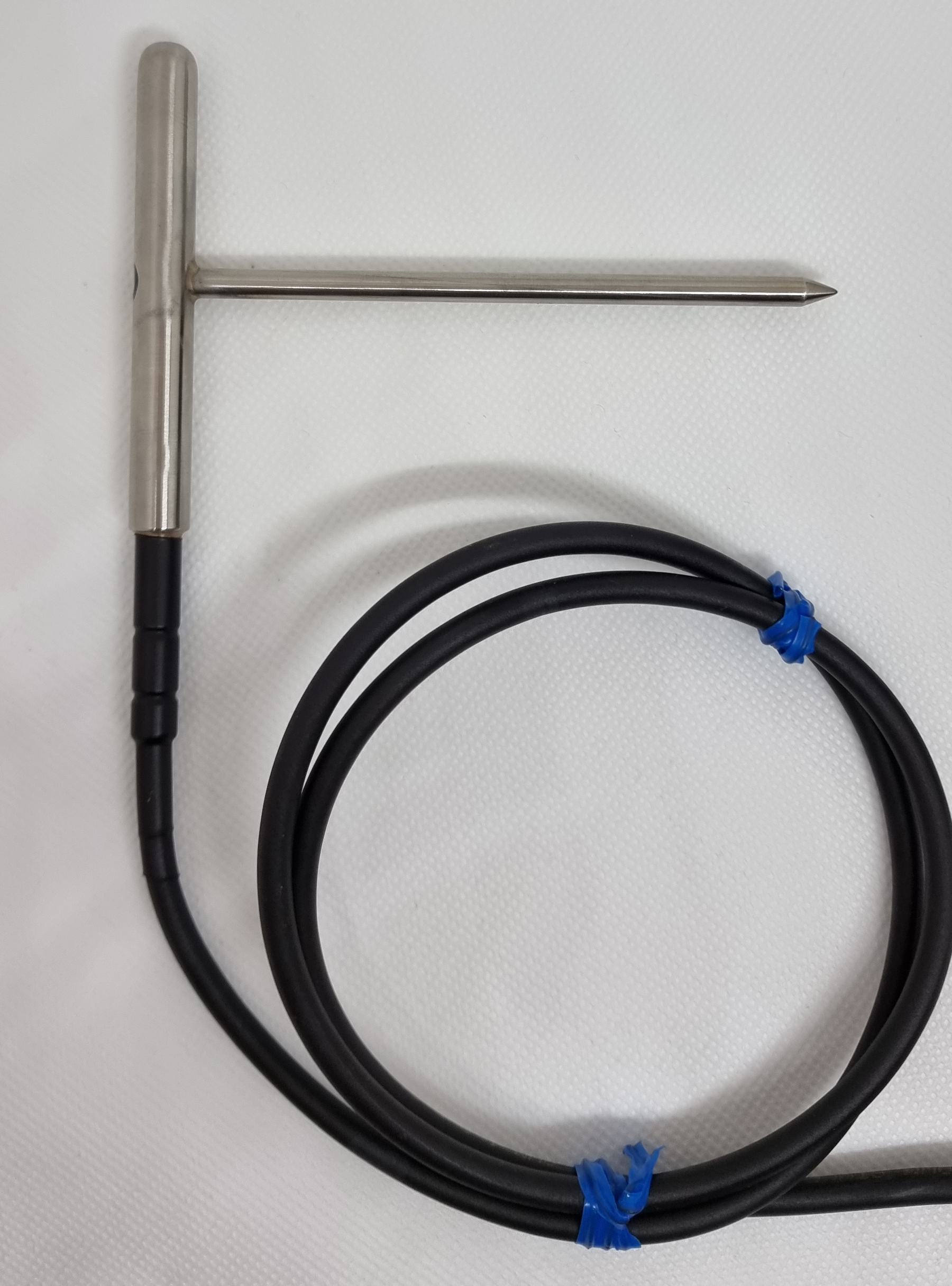 |
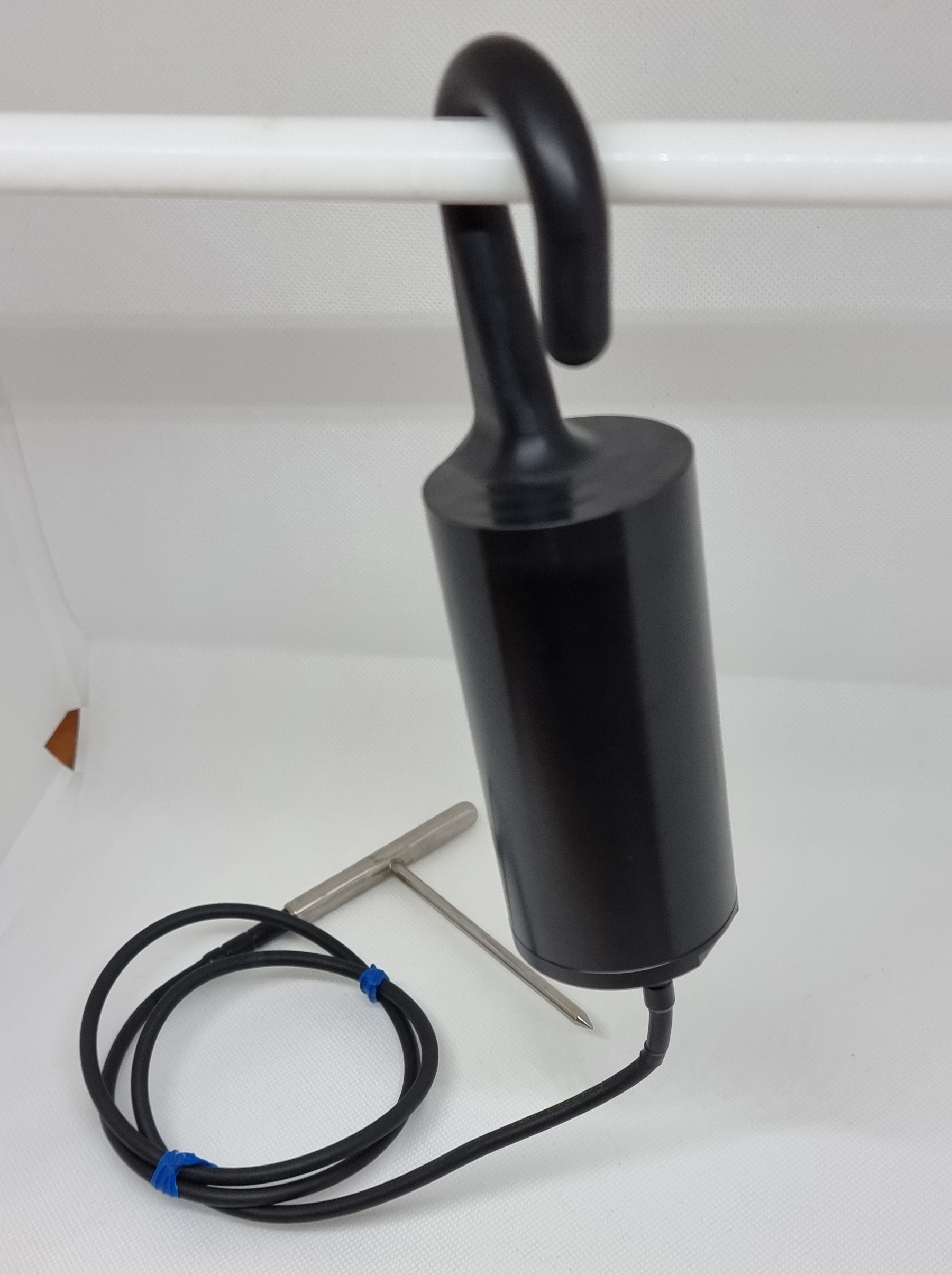 |
From this research, the new ThermalWave system was born. Unlike its 'twin' Deepwave, which is a system for environmental monitoring, warehouses, fridges, etc., ThermalWave is specialised in the monitoring of foodstuffs. ThermalWave, is specialised in monitoring thermal processes (particularly smoking).
The ThermalWave system has the M-100 logger as its node. The name was not chosen by chance, but has a special meaning:
- M stands for Meat, and represents the logger's predominant use in meat processing.
- 100 indicates the maximum temperature at which the logger is up and running.
- The name M-100 picks up on our tradition of naming DeepWave components after celestial bodies. In this case, reference is made to the name of a galaxy that hides a black hole inside it. Just like the smoke chambers with our new data logger!
Are you also looking for an ad hoc monitoring solution? Contact us!
 Flip through our history
Flip through our history



